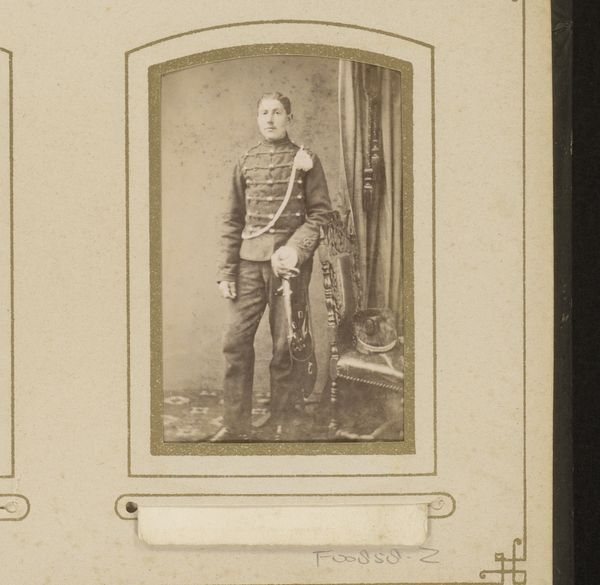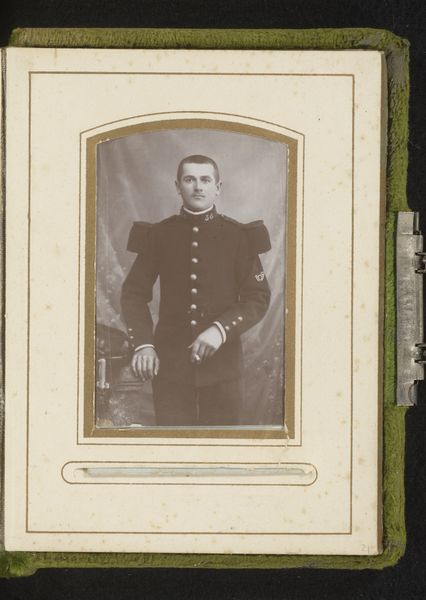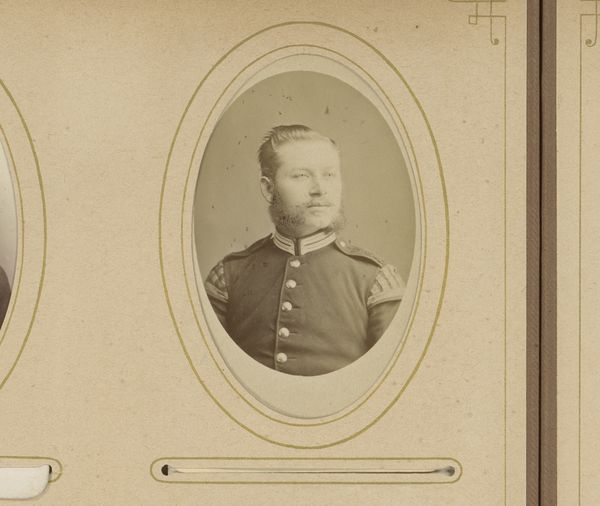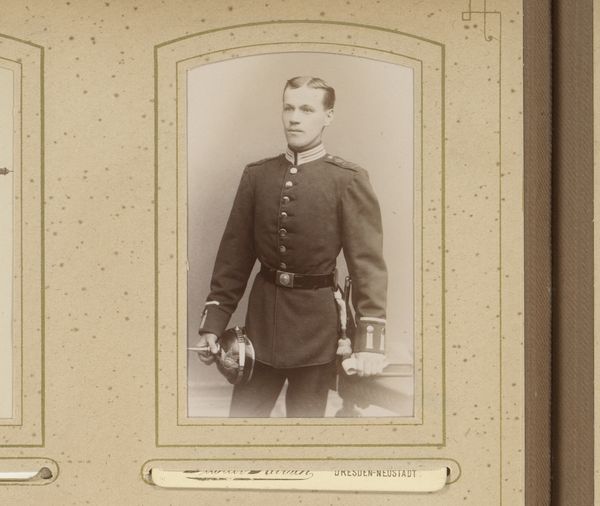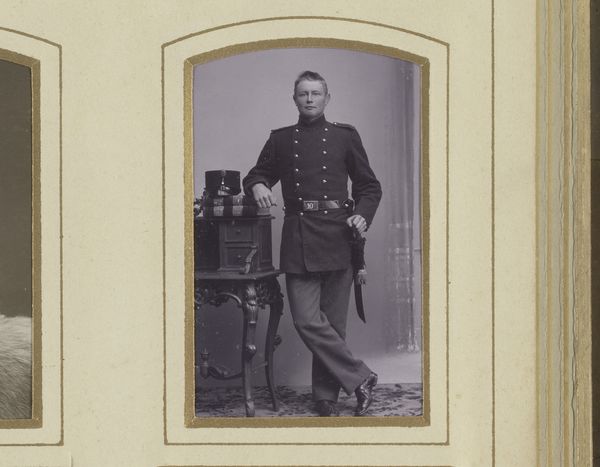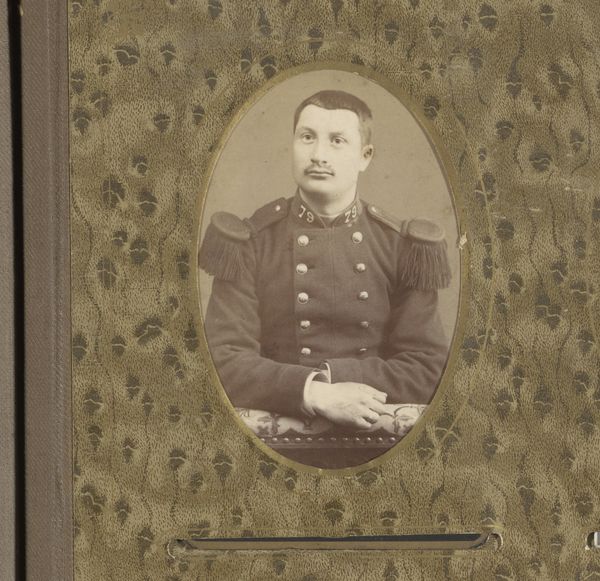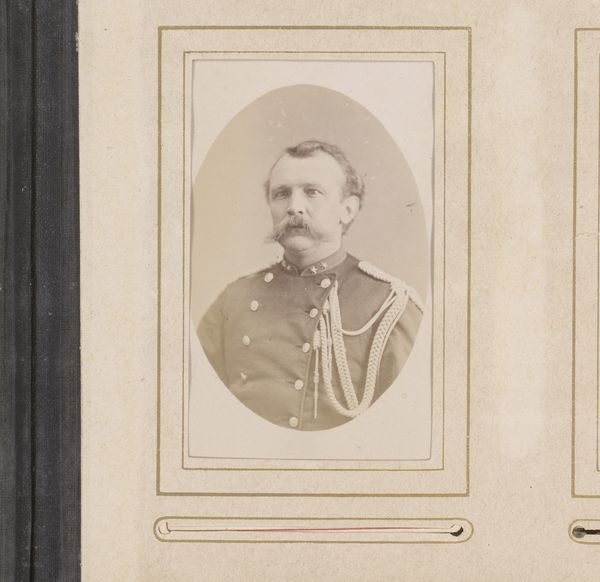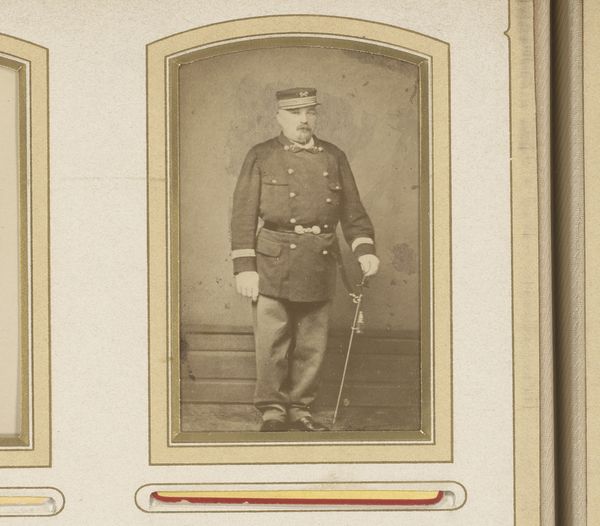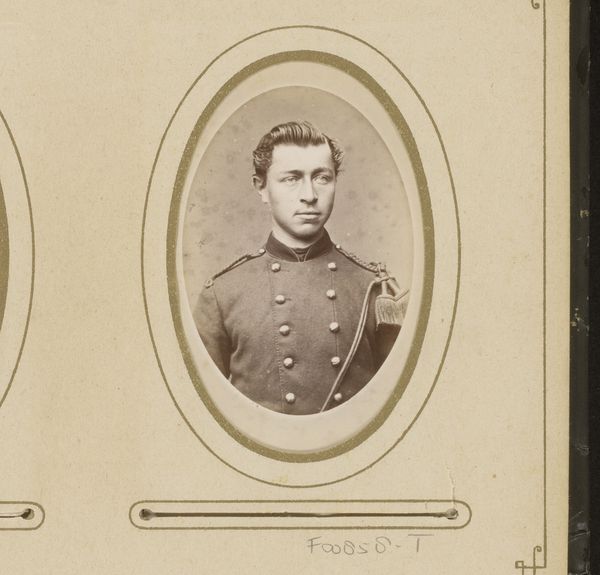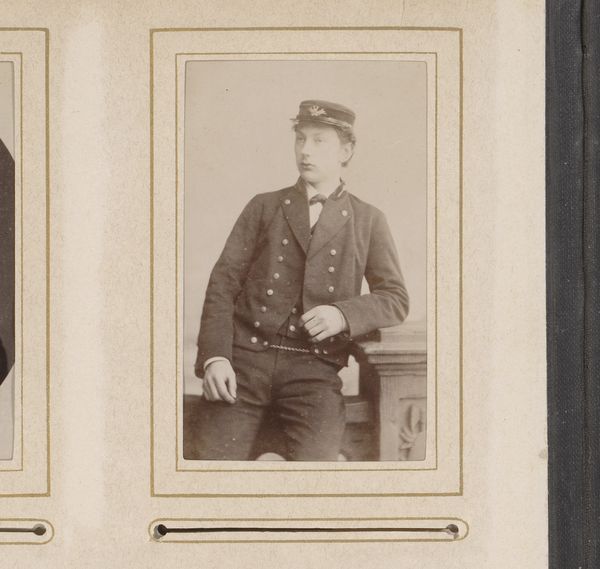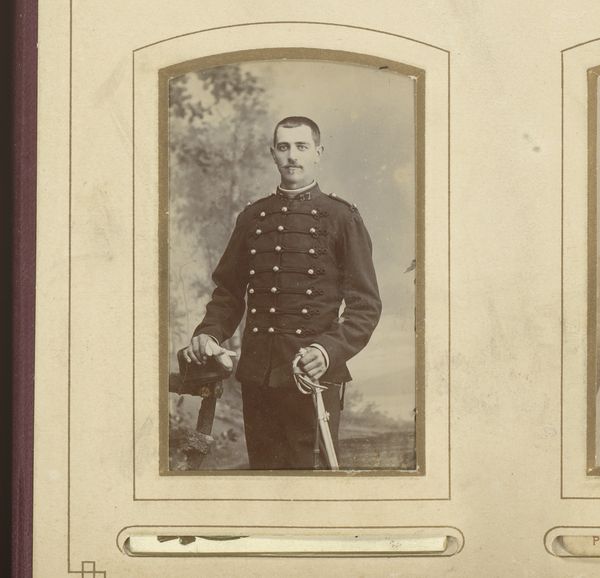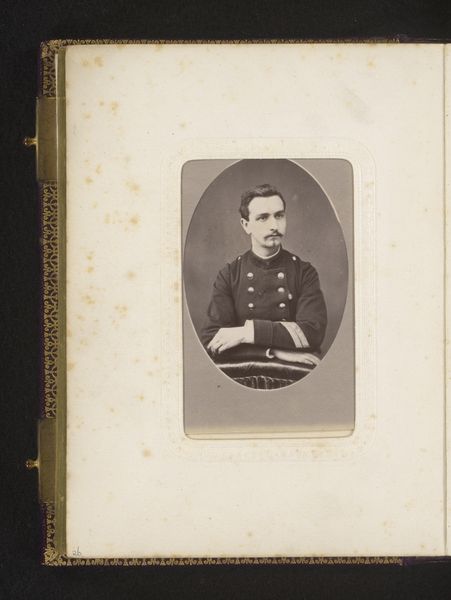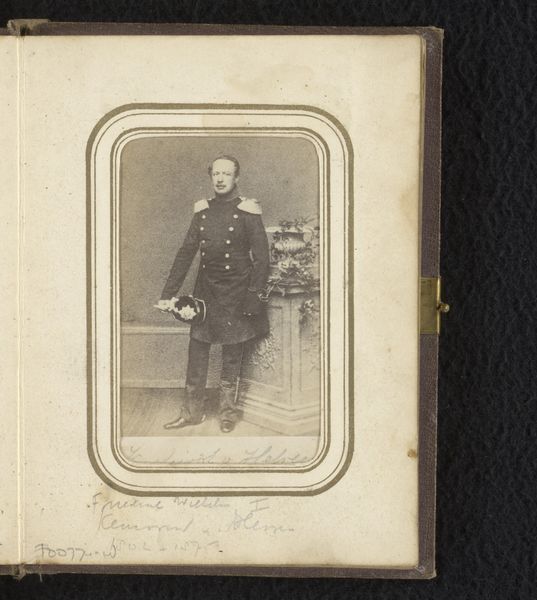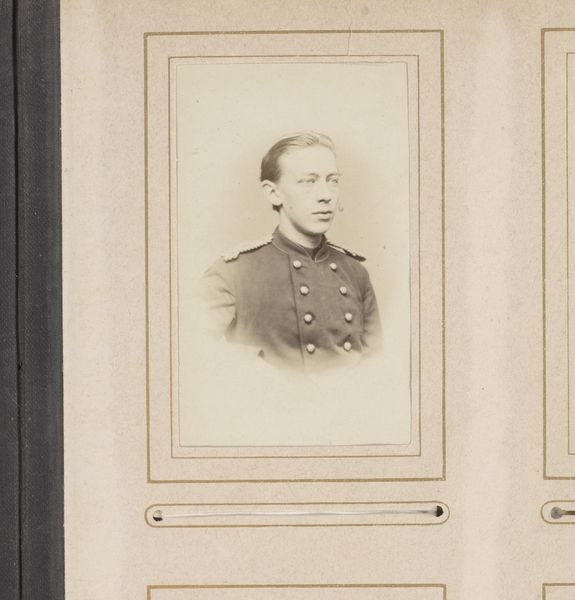
Portret van een man in uniform met witte handschoenen in de hand 1901 - 1908
0:00
0:00
photography
#
portrait
#
photography
#
history-painting
#
realism
Dimensions: height 81 mm, width 50 mm
Copyright: Rijks Museum: Open Domain
Curator: This arresting photographic print is titled “Portret van een man in uniform met witte handschoenen in de hand,” placing the focus squarely on a man dressed in military attire. Its creation is attributed to Gerardus Christiaan Smeekes, likely between 1901 and 1908. Editor: I’m struck immediately by how composed he appears. The tonal range emphasizes the severe cut of the uniform. It's a powerful use of form and chiaroscuro, emphasizing the subject's bearing and, through that, suggesting military rigor. Curator: Indeed. Consider the cultural context: militarism was on the rise across Europe. Portraits like these served to project and reinforce ideals of national strength and individual discipline, especially during a time when empires sought to display their dominance. Editor: Absolutely. There is an interesting dynamic between the sharp lines of the jacket and the more subdued tone of his skin. This really concentrates your focus. Also, his pose— the slight contrapposto and hand resting upon what seems like the head of a fluted pillar – presents us a story about balance and self-control. Curator: Note how the subject’s placement within a photographer's studio— with the ornate pedestal, acts almost like a theatrical set. In many ways it served as a vehicle for upward mobility: It signifies access, professionalism, and aspirations within a very rigid societal structure. It allows one to perceive how someone like this young man understood himself within a historical and sociopolitical framework. Editor: A point well taken. Yet, visually, even beyond this context, Smeekes understood the play of shadow and light and his tonal work gives the piece, if I may, an unsettlingly crispness. The realism on display underscores the photograph's stark message. Curator: Ultimately, these portraits were a testament to individual status intertwined with broader societal trends and national pride. A complex relationship between personal identity and collective aspiration made visible through photography. Editor: Yes, you make clear how the photographic conventions created a form of collective visual understanding but seeing the man with a careful aesthetic eye reveals his own story.
Comments
No comments
Be the first to comment and join the conversation on the ultimate creative platform.
